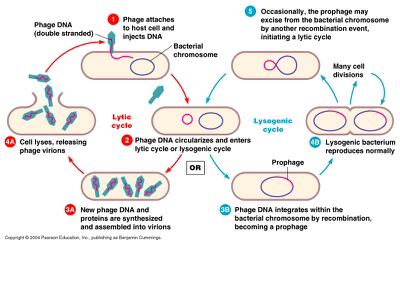Sign up for FlowVella
Sign up with FacebookAlready have an account? Sign in now
By registering you are agreeing to our
Terms of Service
Loading Flow



Viruses can reproduce only by invading a host cell
It begins roughly the same way as the Lyctic cycle, inserting it's DNA into the host cell. The DNA then makes it's way to the hosts nucleus and then inserts itself into the cells chromosomes. The cell is not aware of any change, and reproduces itself normally. The difference is that when this cell copies itself, the virus DNA is copied as well, into all of the daughter cells. The host cell may reproduce once or one thousand+ times before the virus DNA reaches the proper conditions for it to activate. Until these conditions are reached, the virus DNA remains dormant. When the conditions are reached and stable, the virus DNA becomes active, changing from the Lysogenic cycle to the Lyctic cycle.
Mononucleosis or mono, is a perfect example of a virus that uses the Lysogenic cycle of reproduction, as it can remain dormant for years and hardly ever goes away. Because of this, it is hard to nearly impossible to get rid of mono.
